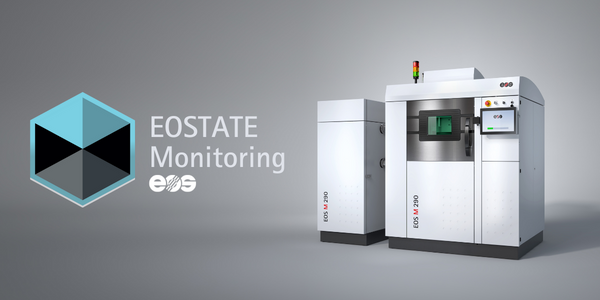German powder bed fusion (PBF) original equipment manufacturer (OEM) EOS has inked a cooperative research and development agreement (CRADA) with the U.S. Department of Energy in order to conduct a research project at Oak Ridge National Laboratory (ORNL). As per the agreement an EOS M290 will be installed at ORNL. The research will revolve around melt pool monitoring and defect detection using the M290 and EOSTATE EOS melt pool monitoring software solution.

“As additive manufacturing continues to generate greater levels of appeal for mass production, there is a growing requirement to ensure quality, and build upon one of the greatest strengths of 3D printing which is the capability to monitor parts as they are being built, layer-by-layer. If we can improve quality control processes to the point of making adjustments to builds in real-time, as anomalies are detected, that will save organizations time and energy while improving overall quality control,” said EOS´ Dr. Ankit Saharan.
“If we can successfully demonstrate the ability to correlate in-situ data with metallurgical inspection, this could significantly change the paradigm of AM and enable mass production of AM components for a variety of high value industries,” said Ryan Dehoff, lead researcher for deposition science and technology at ORNL.

Panama City, FL – Chuck Self, Naval Surface Warfare Center Panama City Division additive manufacturing laboratory head, prepares the EOS M290 Direct Metal Laser Sintering printer. [Photo by Eddie Green]
Metal 3D Printing Competition Heats up
For EOS, this seems like a required response by the firm. After all, former EOS investor Zeiss has shown more than an interest in 3D printing quality assurance (QA). Velo3D’s LBF machines have high performance partially because of better melt pool monitoring. Meanwhile another industrial metrology firm, Nikon, has bought a controlling stake of manufacturing firm Morf3D. AddUp, SLM, and pretty much every PBF company is looking at on-board QA, monitoring, and optimization.
As these PBF companies introduce more lasers, all of this is going to be even more complicated. And the industry is moving towards more quality dependent parts and critical applications. This kind of work is very important to the future of the industrialization of 3D printing. The industry has to up its game in order to make fewer errors and get better parts out the door. With more rival vendors and competition from other manufacturing technologies, PBF has to grow in the quality arena to keep ahead of newer 3D printing techniques.
So, it would seem to be a good project for EOS to undertake. Meanwhile, it is also notable that ORNL, a key developer of many very secret U.S. projects is working with foreign firms. The cooperation is one in a series of agreements that ORNL has been performing with companies including Siemens, AddUp, Xerox and Ingersoll.

Launcher Engine-1 rocket injector – printed on EOS M290 metal 3D. Image courtesy of Launcher.
The U.S. companies are par for the course, but the addition of foreign firms is something to pay attention to. Is the U.K. opening up to close partners in order to source its future technologies from them? Or is the U.S. simply interested in benchmarking foreign technologies in order to develop superior ones of its own? That remains to be seen.
Subscribe to Our Email Newsletter
Stay up-to-date on all the latest news from the 3D printing industry and receive information and offers from third party vendors.
You May Also Like
3D Printing Unpeeled: New Arkema Material for HP, Saddle and Macro MEMS
A new Arkema material for MJF is said to reduce costs per part by up to 25% and have an 85% reusability ratio. HP 3D HR PA 12 S has been...
3D Printing News Briefs, January 20, 2024: FDM, LPBF, Underwater 3D Printer, Racing, & More
We’re starting off with a process certification in today’s 3D Printing News Briefs, and then moving on to research about solute trapping, laser powder bed fusion, and then moving on...
3D Printing Webinar and Event Roundup: December 3, 2023
We’ve got plenty of events and webinars coming up for you this week! Quickparts is having a Manufacturing Roadshow, America Makes is holding a Member Town Hall, Stratafest makes two...
Formnext 2023 Day Three: Slam Dunk
I’m high—high on trade show. I’ve met numerous new faces and reconnected with old friends, creating an absolutely wonderful atmosphere. The excitement is palpable over several emerging developments. The high...































